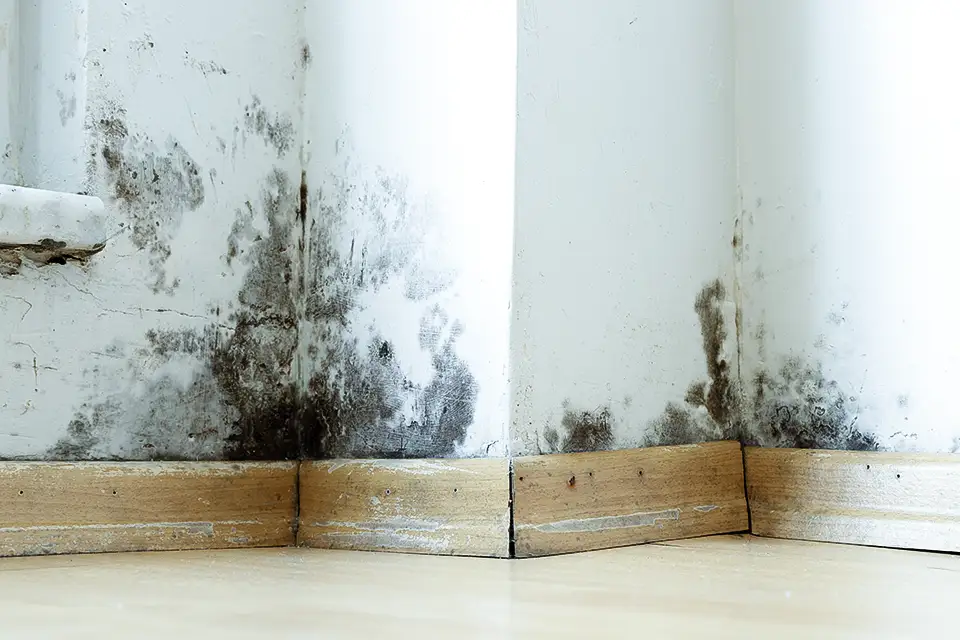When you think about being comfortable in your home, the temperature is probably the first thing that comes to mind.
However, another factor that plays a huge role in how our living spaces feel is humidity. Whether it’s the sticky, heavy summer air or the dry, static-filled chill of winter, getting your home’s humidity level right is key to creating a cozy, healthy environment.
This month, let’s look into why indoor humidity matters, how to spot issues, and what you can do to keep it in check year-round.
Why Indoor Humidity Matters
Humidity might seem like a small detail, but it can significantly impact your health and the condition of your home. Here’s why it’s essential to pay attention.
Health Implications: When the air in your home is too dry, you might notice physical symptoms like dry skin, irritated eyes, or even respiratory issues. Ever wake up with a scratchy throat or chapped lips during the winter? Low humidity is often to blame. Conversely, high humidity can create a breeding ground for mold, dust mites, and bacteria, worsening allergies and asthma.
Comfort: There’s a reason why a high-humidity day feels worse than just a hot one: your body struggles to cool itself down when the air is heavy with moisture. If your home is too humid, it can feel stuffy and uncomfortable, even if the temperature is technically within a reasonable range. Conversely, too dry air can make you feel chilly and uncomfortable, even if your thermostat is warm.
Home Maintenance: Humidity doesn’t just affect how you feel—it can also damage your home. High humidity can lead to mold growth, warped wood, peeling paint, and a nasty, musty smell. Low humidity isn’t harmless either; it can cause wooden furniture to crack, floors to split, and even electronics to be damaged with static electricity. Keeping your humidity levels balanced helps protect your home and everything in it.

The Sweet Spot
A 30% and 50% humidity is ideal for most homes during the warmer months. When it’s colder outside, you might need to drop that range to 15% to 30% to prevent frost from forming on your windows and walls.
The World Health Organization (WHO) and the Environmental Protection Agency (EPA) suggest keeping your home’s humidity between 40% and 60% for the best balance of comfort and health benefits.
Tools to Measure Humidity
To monitor your home’s humidity levels, you’ll need a few tools. A hygrometer is a simple, affordable device that measures the air’s moisture. You can find one at most hardware stores or online.
Many modern thermostats also include humidity sensors, allowing you to monitor your home’s humidity at a glance. However, most thermostats can’t control humidity, so having a dedicated hygrometer is still a good idea.
If your HVAC system has a humidistat — a device often wired to a humidifier—it can automatically adjust the humidity in your home based on the readings. This setup is excellent for maintaining consistent humidity levels, especially in winter when indoor air is drier.
Common Sources of Indoor Humidity
Understanding where excess humidity comes from is the first step in managing it. Here are some common culprits:
External Factors: Outdoor air is one of the most significant contributors to indoor humidity. If your windows and doors aren’t properly sealed or your home lacks sufficient insulation, that moist outside air can sneak in and raise your indoor humidity levels.
Internal Factors: Your daily activities can also add moisture to the air. Cooking, showering, and drying clothes indoors all release steam, which increases humidity. Even breathing adds some moisture to the air! Leaky pipes and poor ventilation can further exacerbate the problem, trapping moisture in your home and causing dampness to spread.

Strategies to Control Humidity
Once you know where the humidity is coming from, it’s time to take action. Here’s how to keep your home’s humidity in the ideal range, whether too high or too low.
For High Humidity
Air Conditioning: Your air conditioner does more than cool the air—it also removes moisture. When the air is pulled into your AC, the moisture condenses on the coils and is drained away, leaving you with cooler, drier air. Just make sure your AC is appropriately sized for your space. If it’s too large, it might cool the air too quickly without removing enough moisture, leaving you feeling cold and clammy.

Dehumidifiers: A dehumidifier can be a lifesaver if your home is particularly humid, especially in areas like basements. These devices pull excess moisture from the air, helping to maintain a comfortable humidity level. They’re particularly useful on those sticky days when it’s humid but not hot enough to justify running the AC.
Ventilation: Good ventilation is essential for reducing humidity. Use exhaust fans in your kitchen and bathroom to vent humid air outside. Opening windows and doors to circulate fresh air can also help, especially when the weather is nice. If your home has moisture-prone areas, like basements or crawl spaces, consider installing a whole-house ventilation system to keep the air moving and prevent dampness from settling in.
Structural Fixes: Check your home for any leaks, whether they’re around windows, doors, or in your plumbing. Fixing these leaks can prevent additional moisture from entering your home. Adding insulation to your walls, attic, and crawl spaces can also help keep conditioned air inside and prevent outside air from infiltrating. In particularly damp areas, laying down a moisture barrier (such as a thick plastic sheet) can prevent soil moisture from seeping into your home.
For Low Humidity
Humidifiers: During the winter, indoor air tends to dry, so a humidifier can add much-needed moisture. These devices come in various sizes, from small, portable units for individual rooms to whole-house systems integrated with your HVAC. A humidifier helps alleviate dry air discomfort, reducing symptoms like dry skin, chapped lips, and respiratory irritation.
Houseplants and Water Sources: Adding houseplants is another natural way to increase humidity. Plants release moisture into the air through a process called transpiration. You can also place bowls of water near heating sources—like radiators or vents—so the water can evaporate and add moisture to the air.
DIY Solutions: For a quick fix, try placing wet towels or sponges near heat sources. As they dry, they release moisture into the air. You can also leave the bathroom door open after a hot shower to let the steam circulate throughout your home.
Final Thoughts
Keeping your home’s humidity levels in check is about more than just comfort—it’s also about protecting your health and preserving your home. With the right tools and a few proactive steps, you can easily manage indoor humidity, creating a living space that feels just right, no matter the season.
If you need some help controlling your home’s humidity, don’t hesitate to call Advantage Heating & Air Conditioning. Our technicians can help troubleshoot your humidity issues and offer affordable and easy solutions.


